The History of Stone Mountain and the KKK - Part Two
It's more than some sculpture on the side of a mountain
Welcome to my freemium newsletter by me, King Williams. A documentary filmmaker, journalist, podcast host, and author based in Atlanta, Georgia.
This is a newsletter covering the hidden connections of Atlanta to everything else!
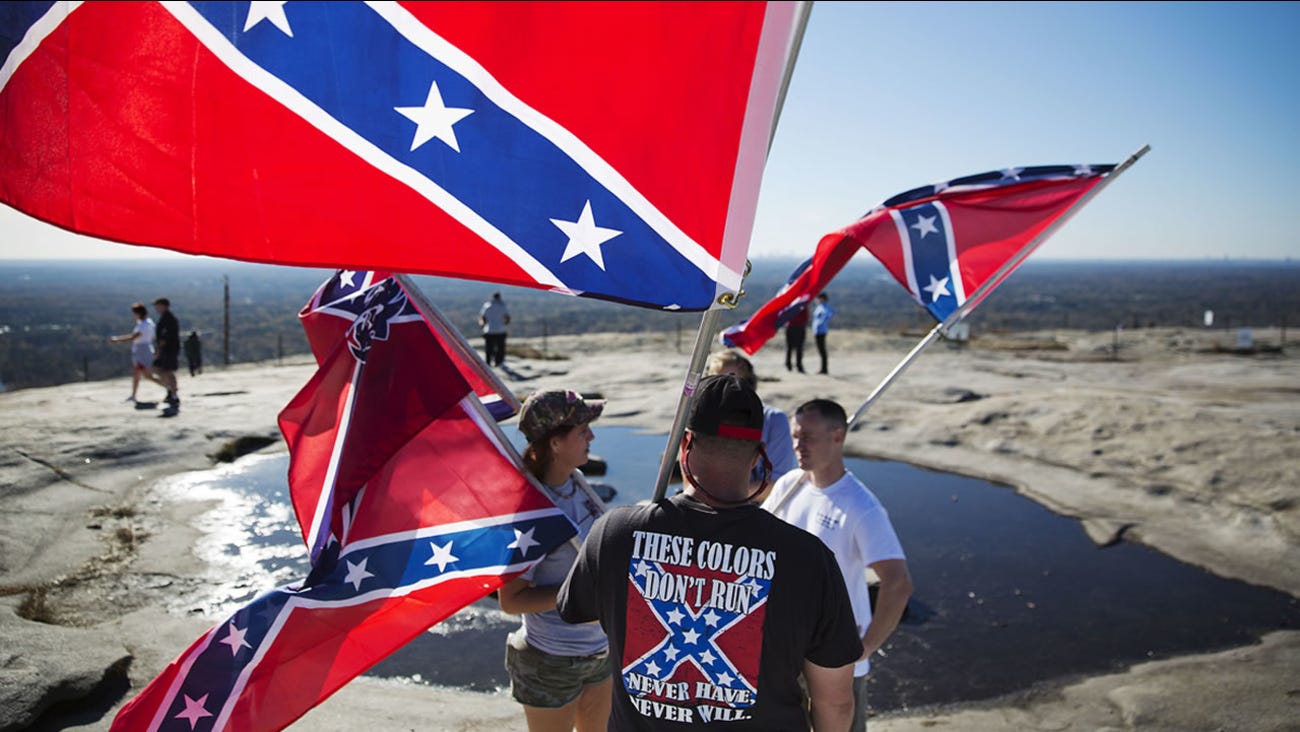
Written by King Williams
Edited by Alicia Bruce
As we welcome 2021, there were some articles that for a host of reasons I did not put out in 2020. So for the month of January, I’ve decided to release a few articles that I feel are worth taking a look at. This article is on the history of Stone Mountain and the Klu Klux Klan, one of the longest-running terrorist groups in the world.
I initially wanted this to come out on Thanksgiving but largely shelved it as I felt it was a bit too much to read during a year that already has been a lot. I decided today was a good time to bring this one out and would love to hear your thoughts!
-King
3) Confederate monuments have nothing to do with history
Confederate monuments and the ideology around them are based on only one thing, white supremacy.
Confederate monuments have grown as a backlash to Black gains. These corresponding surges in confederate monuments erected align directly with the surges in white supremacist organizations in the US.
White women are the biggest factor in the growth of confederate monuments
If you read my piece on the history of Memorial Day weekend, you will remember the role of southern white Women-led memorial societies had in shaping the false narratives on ‘the lost cause’. Their successors, the neo-Confederate, United Daughters of the Confederacy (UDC), have been the biggest perpetrators of these falsehoods, still.
From the May 26th edition of this newsletter:
Groups like the LMA popped up across the south, initially to mourn the loss of confederate soldiers but quickly evolved into a fundraising and advocacy organization for pro-confederate remembrances throughout the south…
….The UDC became a quite powerful organization and their tactical movements help raise generations of future Southern lawmakers, judges, and others. Even in innocuous spaces such as highway names, the UDC made sure they were named after those in the confederacy.

Caroline H. J. Plane, the woman who brought the confederacy to the mountain
Caroline Helen Jemison Plane was a charter member of the United Daughter of the Confederacy (UDC) and the president of the Atlanta chapter. Plane is the person who manifested the confederate mural from idea to execution. Plane and the Atlanta UDC chapter incorporated an organization dedicated for the sole purpose of upholding the confederate memorial known as the Stone Mountain Confederate Monumental Association (SMCMA) in 1916. Plane would also lead the fundraising campaign to fund the construction of the monument, in addition to successfully pitching sculptor Gutom Borglum, who began work in a limited capacity in 1916.
The man who sculpted Mount Rushmore started at Stone Mountain first
Stone Mountain’s initial sculptor Gutom Borglum was an Idaho territory-born artist and was also an active Klan member.
Borglum is most known for his work in creating Mount Rushmore in South Dakota. That piece, like Stone Mountain, never saw the fruition of the original idea. Both pieces are carved into a mountain revered by Native Americans (originally called the Six Grandfathers at Mt. Rushmore site) and focused on promoting prominent white men. For Borglum, despite being an actual Klan member, he was not embraced during his time in Atlanta as he was seen as a ‘Yankee’, clashing while he was in Atlanta. Borglum would eventually leave the project after receiving a better job in what would eventually become Mount Rushmore in the Black Hills of South Dakota. The sculptor who replaced him, Augustus Lukeman, reconstituted the monument to focus on three horsemen of the Confederacy, General Robert E. Lee, President Jefferson Davis, and General Stonewall Jackson.
The sculpture
As to who initially came up with the idea of using Stone Mountain as a confederate memorial is a bit of a debate.
The first printed mention of dedicating the site to the confederacy dates back to 1869 via a poem by Francis Ticknor. While the first mention of it in the press comes in May of 1914 from William H. Terrell, an Atlanta poet, and son of a Confederate veteran in an editorial for The Atlanta Constitution. The other mention comes three weeks later from Georgia resident John Temple Graves, who was the editor of The New York American. While the first efforts to move on the mountain come from Caroline H.J. Plane and the UDC that same year.
Stone Mountain is the largest monument anywhere in the world to white supremacy including Nazi Germany. It is also the largest high relief sculpture in the world. Starting in 1915, this 90-foot high, 190-foot wide, and an 11-foot deep statue was started 50 years after the Civil War, purposely built to pay homage to treason from the United States.
The initial plan was to have seven central figures on the north face of the mountain, an additional 65 figures (five for each of the 13 confederate states), alongside thousands of other soldiers carved along the mountain. The project was then stalled as the funding and support for the project dwindled due to World War I. As a result, the carving of the mountain did not start until 1923.
Caroline Plane was able to gain the space to do the monument from then-owner Samuel Venerable. Venerable was a Klansman himself who owned the mountain for his mining business. Venerable granted a 12-year easement in order to complete the project. After Borglum left for South Dakota, Augustus Lukeman came in 1928 to see the project to fruition but eventually backed out the project, resulting in the work not being finished within the allotted 12-year time frame. Subsequently, for the next three decades, the project remained unfinished and owned by the Venerable family until it was purchased by the state in 1958. Once the state-owned the property, the project would begin again, including a May 1970 dedication and not fully completed until 1972 by Roy Faulkner.
4) The third era of the KKK: Anti-Civil rights era
The third era of the Klan came during the 1950s as a backlash to the civil rights movement.
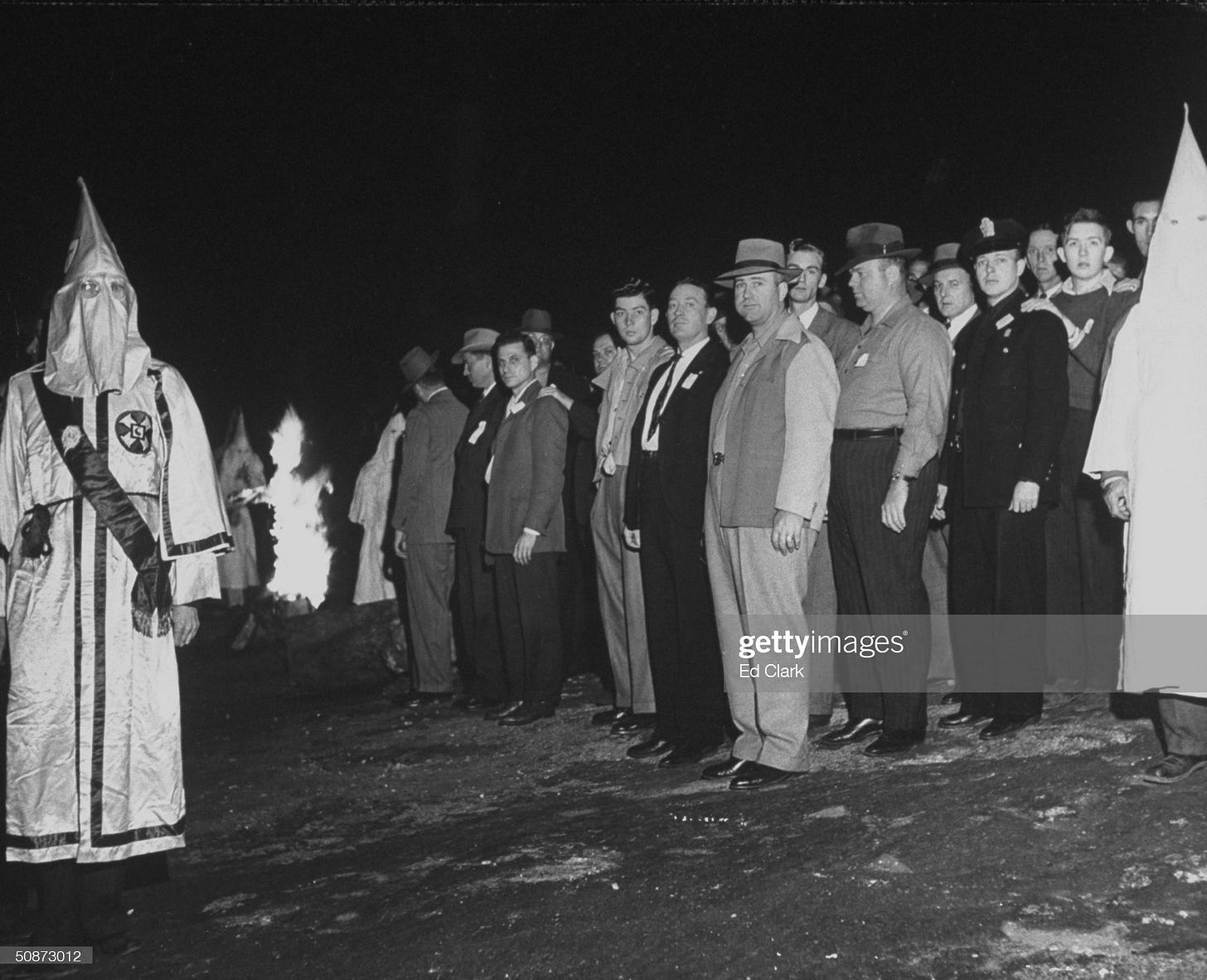
What prompted this third resurgence of the Klan stemmed from animosity towards Black soldiers returning home from World War II in the late 1940s, in combination with a growing set of legal challenges from African Americans towards undoing varying aspects of segregation. In Georgia, this saw a legal challenge the state’s deliberate, white primary system successfully defeated by the Atlanta Negro Voters League ahead of the 1946 Governors race. This ruling allowed African Americans the right to vote in Georgia. As a result, it led to the cross burning featured in the photo above, which also corresponded to an increase in new members.
Stone Mountain’s monument and the park is a product of big government spending
Big Government, (both state and federal) have been the legal protectors, as well as chief financiers for enshrining this monument to the Confederacy for over a century.
The project of the Stone Mountain carving was so expensive that it took the special minting of a US fifty-cent piece, plus a combination of federal and state funding to even complete the three generals on the mountain. In 1942 under uber racist, Georgia Governor Eugene Talmage launched a new initiative to raise funds for Stone Mountain but was stalled again by the emergence of World War II from 1941-45.
The state of Georgia officially acquired the park in 1958 as a response to the Supreme Court’s ruling in Brown v. Board of Education in 1954, desegregating public schools. This was in combination with the emerging rise of the Civil Rights Movement in the early 1950s taking place throughout the south. The park was officially acquired in 1958, at a price of $1.125 million after the urging of Georgia’s segregationist Governor Marvin Griffin, with approval from the Georgia legislature. The Stone Mountain Confederate Memorial Association had now been renamed as the Stone Mountain Memorial Association, on top of being given official status as a state-run organization via the Stone Mountain Memorial Association Act (the Official Code of Georgia Annotated § 12-3-190).
In 1960, the Stone Mountain Confederate Memorial Advisory Committee was created, comprised of six known artists. The committee settled on sculptor Walker Kirkland Hancock of Gloucester, Massachusetts to complete the carving with work resuming in 1964. Stone Mountain Park opened officially for the public seven years later after extensive renovations on April 14th, 1965, one hundred years to the day of the assassination of President Abraham Lincoln.
5) Stone Mountain Park - A family attraction built on racism
One of the greatest oddities related to Stone Mountain Park is the fact that it is the state’s most visited attraction. But it shouldn’t be surprising as its history is literally, and figuratively, whitewashed.
Stone Mountain is popular then and now because it is a low-cost attraction for families. Stone Mountain is a mere 30 minutes from downtown Atlanta.
Because of its geographic location to the city of Atlanta, MARTA bus routes to the park, plus the park’s connection to the greater metro area via two adjacent highways (I-78, I-285), it is one of the region’s more accessible locations. Stone Mountain Park is also one of the few OTP (outside-the-perimeter) locations connected by adjourning, interconnected small towns and suburbs. These nearby areas Tucker, Decatur, and Clarkson are all accessible by walking or bike trails. While some more exurban locales like Lawrenceville, as well as suburbs Redan, and Lithonia are a mere 15-minute drive away. As a result, the park has a strong amount of daily patrons.
The park features an on-property hotel operated by Marriott, an inn, a golf course, a lake, camping grounds, a water park, a mini-golf course, a train that circles the park, main street, and of course, the laser show. This doesn’t include a 365-day operating schedule that includes a variety of programs and events for people of all ages.
One of the biggest reasons for this success can be attributed to the management of the property by Herschend Entertainment. The company has managed the property since 1998, turning the park into a micro version of a Six Flags + weekend cabin retreat. This pivoting to a family-friendly weekend adventure simply omits the connections to its sordid past. Most of the confederate statues, monuments, and street names are still on display. Even the series of confederate flags at the base of the mountain is still there and of course, the three horseman monument itself. The park has instead focused on fun versus attempting to address any of its problematic material.
As Black Atlanta grew, so did its relationship to Stone Mountain
One of the greatest ironies is that Stone Mountain is now more than 70% Black. However, political representation has remained white until recently.
The City of Stone Mountain was one of the many beneficiaries of white flight from the city of Atlanta in the 1960s. Stone Mountain’s population has grown in two waves, the first being from the 1970s through the 1980s when more white Atlantans were leaving the city of Atlanta. Then again as the town became swept up in newer waves of Black middle-class migration in the 1980s and 1990s. As more Black residents moved in, white residents moved out. But the Black residents moving to Stone Mountain were largely comprised of those not from Atlanta, nor were familiar with the history of the property.
For most Atlantans, Stone Mountain’s connections to white supremacy often coming upon a further personal inquiry rather than being initially educated on it. Often questions arise from guests visiting the park for one of its various events. By 1989, the Klan held their last major rally at the mountain. Having mostly vacated the mountain except for confederate supporters and white supremacists who make the annual pilgrimage in August. By the 2010s the August rally was all but nonexistent, after constantly being denied permits by Herschend Entertainment, despite some spurts by a few supporters in the last decade.
But then came the killing of Ahmaud Arbery, Breonna Taylor, George Floyd, and Rayshard Brooks.
6) What is next?
The 2020 Black Lives Matters protests have renewed this debate
In the wake of the 2020 summer protests, there have been renewed calls to remove not only the images of the side of the mountain.
The summer of 2020 saw more confederate monuments go down than any other time in American history. These protests initially focusing on police brutality quickly evolved into attacking any symbols of oppression, leading to the destruction of monuments of those related to problematic individuals and white supremacy.
Summer surprises at Stone Mountain
After the ongoing Black Lives Matter protests spread from downtown Atlanta to the outer suburbs and exurbs of the metro area, so did the concerns to protect confederate monuments.
This was further compounded by an unexpected July 4th armed counter-protest against white supremacists at Stone Mountain Park by members of an all-Black militia group known as the NFAC (Not Fucking Around Crew). That protest saw an estimated 2,000 armed protesters walking through the 3,200-acre park on one of the busiest days of the year. That resulting protest quickly drew false accusations to being both Black Lives Matter and the new Black Panther Party (it was neither organization). This show of force led to a myriad of false information spreading online by alt-right and white nationalists, leading to a conversation of staging a counter-protest by white supremacists at the park during the annual August pilgrimage. The threat of protests, defacing monuments, and violence prompted Stone Mountain park to quickly deny permits to white nationalists groups who wanted to stage a ‘defend the monument’ rally of their own.
Despite this, these white nationalists groups decided to take their August protest to Stone Mountain Village as the park preemptively shut down in addition to denying a permit. This shut down of the park also prompted many businesses in the neighboring Stone Mountain Village to also shut down. But not all businesses as local coffee shop Gilly Brew Bar was open as both the protests and counter-protests were held a few feet away from its building. Since this summer, the Stone Mountain Memorial Association has made it a task to figure out how to reconcile its past while envisioning its future.
While this is happening, Georgia lawmakers are considering increasing penalties for defacing and destroying monuments.
Governor Kemp made it a crime to remove a Confederate monument
Governor Brian Kemp passed a law in 2019 to make it illegal to remove any Confederate monuments without replacing them in an area of equal relevance.
Passing on party lines, this controversial law included a late addition of ‘all monuments’, adding civil rights monuments protection to the legislation. This was mostly symbolic as Georgia does not have many historic designations for civil rights despite the legacy as well as that doesn’t cover most of the remaining historic artifacts of Black history in Georgia.
Georgia’s relationship to the enshrining of white supremacy and commemorating the confederacy goes beyond Stone Mountain.
Many of these monuments, are so ingrained within the city of Atlanta and state of Georgia, that you’d hardly notice them. Take for example this confederate monument in Piedmont Park, dubbed ‘The Peace Monument’ which sits a few feet away from the secondary entrance on 14th street and Piedmont. But that’s not even the iceberg of Georgia roads, bridges, cities, and counties named after some aspect of the confederacy.
Can the law be changed?
Yes, but the Georgia Democrats would have to first take up legislation to do so, in which one lawmaker, State Rep Shelley Hutchinson already has drafted.
Most importantly the state Dems would have to complete a trifecta of, a) the majority in the house and senate, b) win the governorship, and c) have more county/city leadership to aid in removing these monuments. This is on top of the mounting potential legal challenges from a state-level court system stacked with Republicans by both former Governor Nathan Deal and current Governor Brian Kemp.
But Georgia isn’t alone in this as several states have books enshrining these monuments with prison sentences attached to circumvent any destruction. There are well over a thousand public confederate symbols across the US, many in states that were not a part of the confederacy nor the United States, to begin with.

How would we actually get rid of the monuments?
To get rid of the monuments would require a three-prong strategy to just address the bureaucracy before the physical removal would start.
First: Stone Mountain Park is managed by the Norcross-headquartered, Hirscend Entertainment, owners of both Dollyworld and the Harlem Globetrotters. The company has indicated that they will not be doing anything on the matter.
Second: While the decisions related to the preservation of the Confederate memorials are implemented by the Stone Mountain Memorial Association, which since the 1950s been a state government organization.
Third: The site is owned by the state of Georgia. With the backing of a law passed by governor Kemp in 2018, alongside a Republican-controlled state House and state Senate. On top of a state-level court system stacked by Republican appointees.
This triple layer of bureaucracy, private enterprise, and historic society have made it nearly impossible to implement any changes. But recent rumors of Hirscend Entertainment potentially moving on from managing the property despite renewing a 35-year lease in 2012, is a potential sign of change. While in 2018, Georgia Democratic nominee for Governor Stacey Abrams has indicated clearly that she supports the removal of the confederate monuments.
But we’ve seen places such as Decatur over the summer and other metro Atlanta places circumvent these rules. While in the city of Atlanta, there have been changes to street names, and even Grady High School (not a confederate, but very racist) has moved on to change its name.
Confederate monuments are an American problem
There are still over 1700 confederate monuments across the US, half of those are statues, all of which have come as a backlash to African Americans. Several states have laws to preserve confederate monuments and in June, the Trump administration issued an executive order calling for the prosecution of those involved in destroying monuments. It should be no surprise these are often passed during times of racial duress and upheld by white politicians. But the US is changing and if the 2020 summer protests are any indication, it would be best to get ahead of a tide that has finally turned.
Don’t forget there are Black people and businesses at Stone Mountain
Ending the confederate monuments doesn’t mean not supporting the Black-owned businesses, schools, and residents of the area.
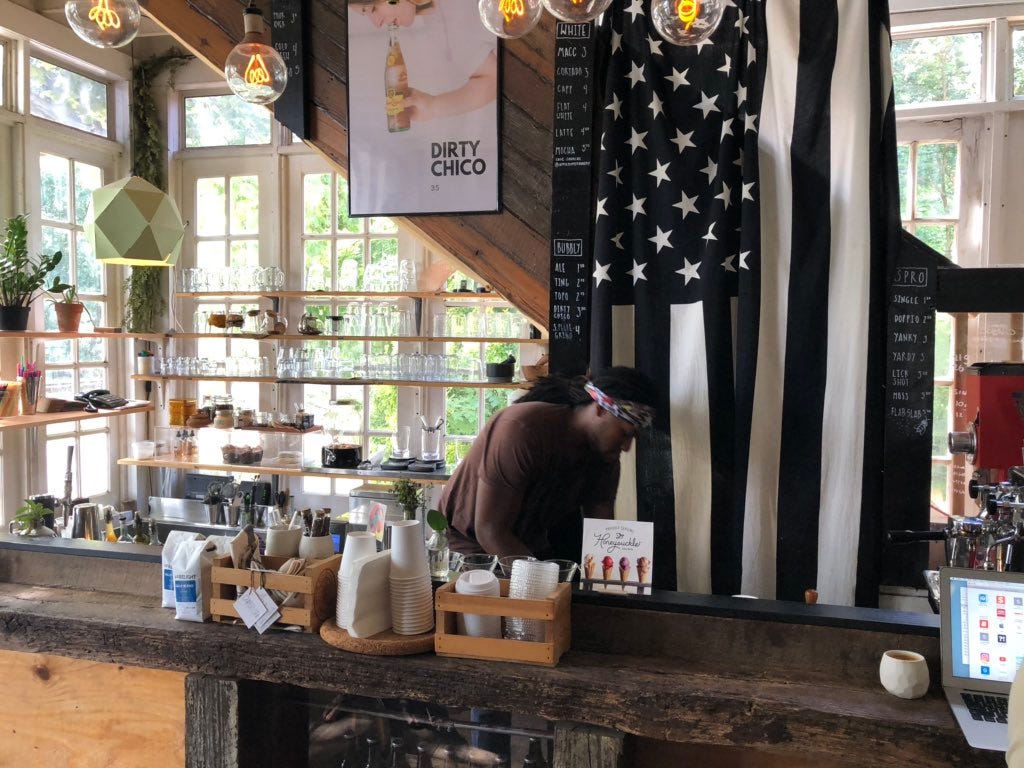
And while there will likely be a renewed push towards removing the monuments, please do not forget that Stone Mountain Park is not the same as the everyday people who live there. Stone Mountain and Stone Mountain Village are home to many Black-owned businesses who could still use your support, especially during the pandemic. That includes restaurants such as Gilly Brew Bar, Aztec Bikes, Sweet Potato Cafe, Ms. Icey’s Kitchen, and Apple Butter Bakery to name a few. This also includes the Black realtors, contractors, and other small businesses within the area.
Nor should we forget the history of Shermantown, and its contributions to the history of Georgia. If anything, help aid in the renewal of preservation for the few remaining spaces, homes, and artifacts in the area to be protected.
In closing
It is important to understand these names were done by white people and for white people, with no input from those who do not agree with them. The confederacy lasted only four years, built off the foundation of Native American genocide, enslaved African labor, and upheld through legal as well as a political system which explicitly was created to uphold the false construct of white supremacy.
For over 200 years, the notions of white supremacy still linger in Georgia, and Stone Mountain is a monument to a darker time in the history of our country. The monuments only exist to reinforce white supremacy and it’s time for a change. We can’t wait another 200 years.
Thank you for taking the time out to read this and I love to know what you think!
-King
Stone Mountain and the history of the KKK - Part One
-KJW
Did anyone get superpowers? If so, can I speak to the manager?






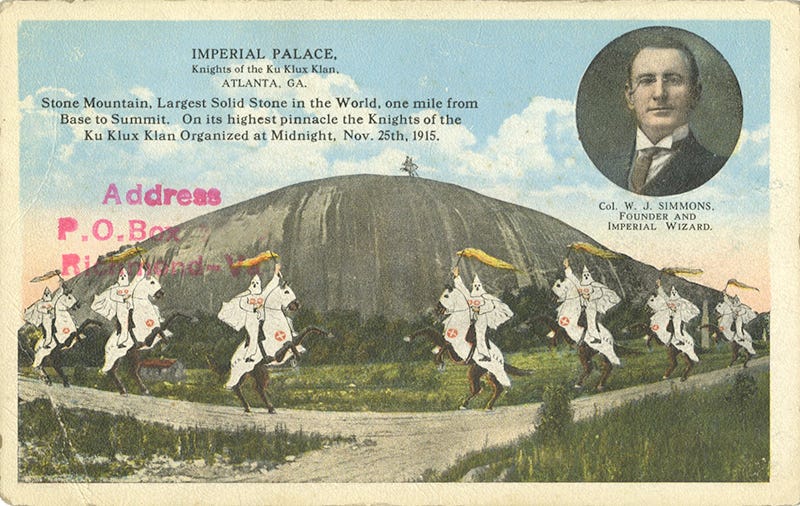
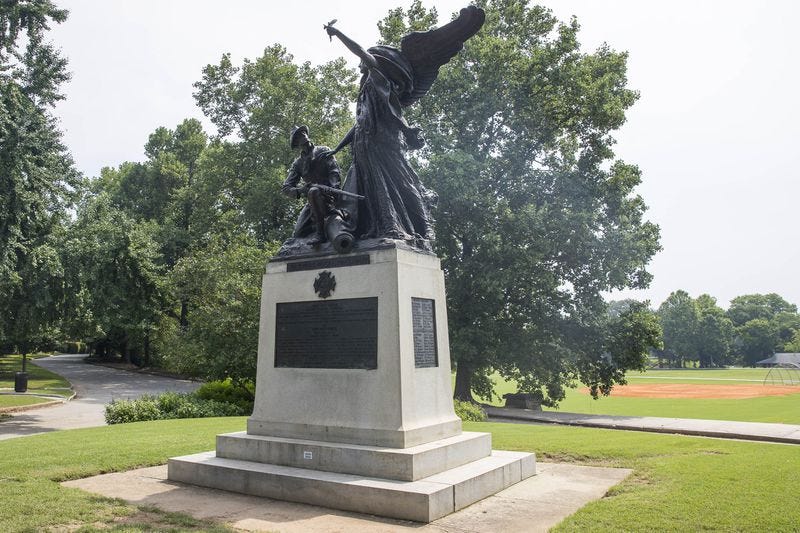

Black citizenship was invalidly ratified. They are in America illegally.